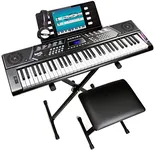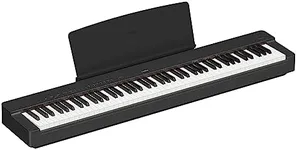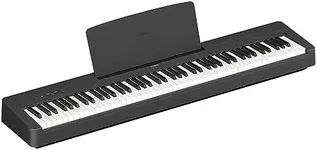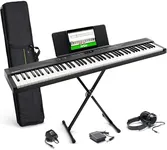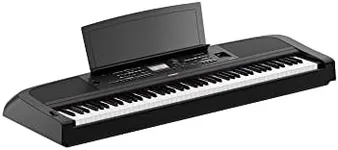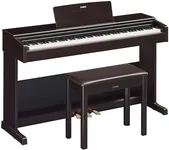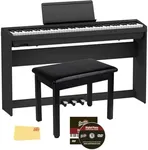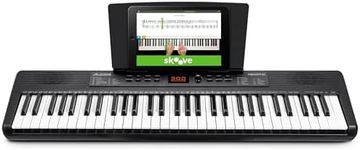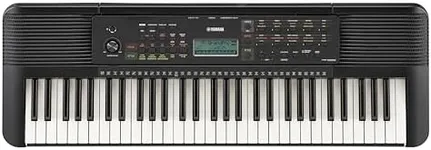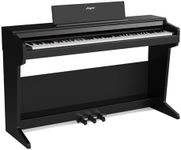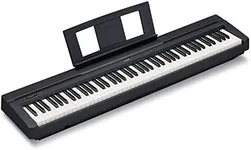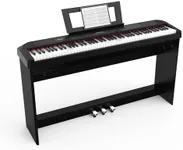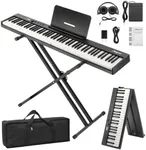Buying Guide for the Best Piano Keyboards
Choosing the right piano keyboard can be a rewarding experience if you know what to look for. Whether you're a beginner, an intermediate player, or a professional, the right keyboard can enhance your playing experience and help you achieve your musical goals. Here are some key specifications to consider when selecting a piano keyboard, along with explanations to help you understand their importance and how to choose the best fit for your needs.Number of KeysThe number of keys on a piano keyboard is crucial because it determines the range of notes you can play. Standard pianos have 88 keys, but keyboards can have 61, 76, or 88 keys. For beginners or those with limited space, a 61-key keyboard might be sufficient. Intermediate players might prefer 76 keys for a broader range, while advanced players and those aiming to play classical music should opt for 88 keys to have the full range of a traditional piano.
Key ActionKey action refers to how the keys respond when pressed. There are three main types: weighted, semi-weighted, and unweighted (synth-action). Weighted keys mimic the feel of an acoustic piano and are ideal for serious players who want an authentic experience. Semi-weighted keys offer a balance between the two and are suitable for intermediate players. Unweighted keys are lighter and easier to press, making them a good choice for beginners or those who play electronic music.
Touch SensitivityTouch sensitivity means the keyboard responds to how hard or soft you press the keys, affecting the volume and tone. This feature is important for expressive playing. Keyboards with touch sensitivity allow for more dynamic performances, making them suitable for all levels of players. Beginners might start with a basic touch-sensitive keyboard, while more advanced players should look for multiple levels of sensitivity for greater control.
PolyphonyPolyphony refers to the number of notes a keyboard can produce at once. Higher polyphony allows for more complex and sustained sounds. Basic keyboards might have 32-note polyphony, which is sufficient for simple pieces. Intermediate players should look for at least 64-note polyphony, while advanced players and those using the keyboard for composing or performing complex pieces should aim for 128-note polyphony or higher.
Sound QualitySound quality is determined by the samples and technology used in the keyboard. High-quality sound samples from real pianos provide a more authentic and enjoyable playing experience. Beginners might not need the highest sound quality, but as you progress, you'll appreciate keyboards with better sound engines and more realistic tones. Look for keyboards with multiple sound options and high-quality speakers for the best experience.
PortabilityPortability is an important factor if you plan to move your keyboard frequently. Lighter and more compact keyboards are easier to transport and store. For home use, a heavier, more robust keyboard might be acceptable, but if you need to take it to lessons, gigs, or practice sessions, consider a lighter model. Evaluate your lifestyle and how often you'll need to move the keyboard to determine the right balance between portability and features.
Additional FeaturesAdditional features such as built-in learning tools, recording capabilities, connectivity options (like USB or MIDI), and accompaniment styles can enhance your playing experience. Beginners might benefit from keyboards with built-in lessons and practice aids. Intermediate and advanced players might look for recording features and connectivity to other devices for composing and performing. Consider what extra features will support your musical journey and choose accordingly.
